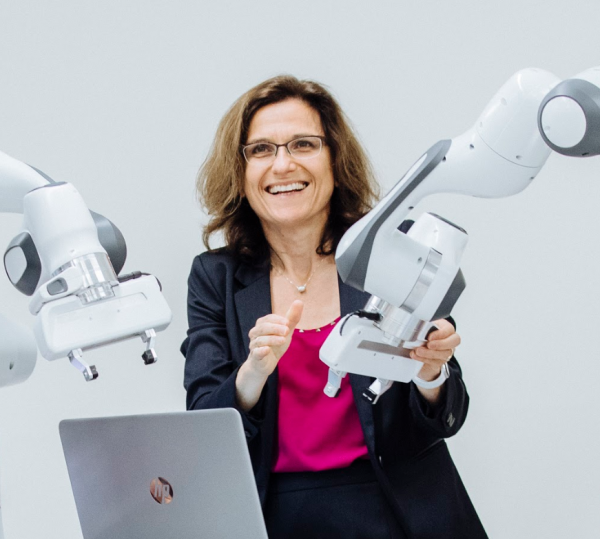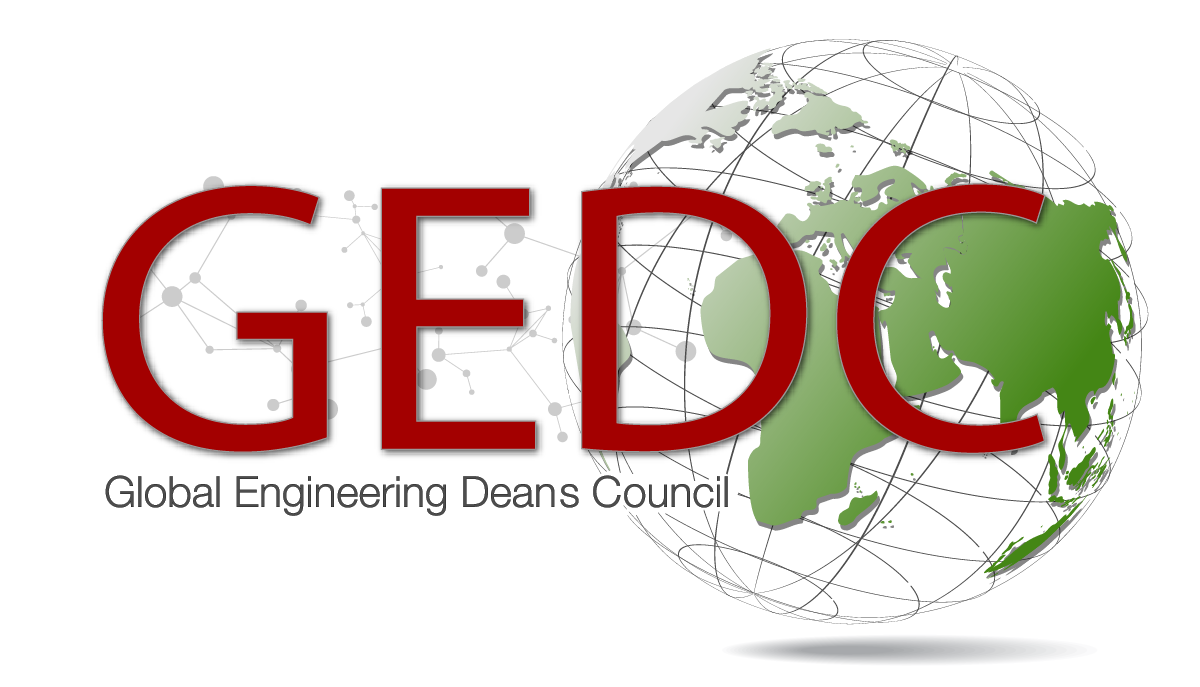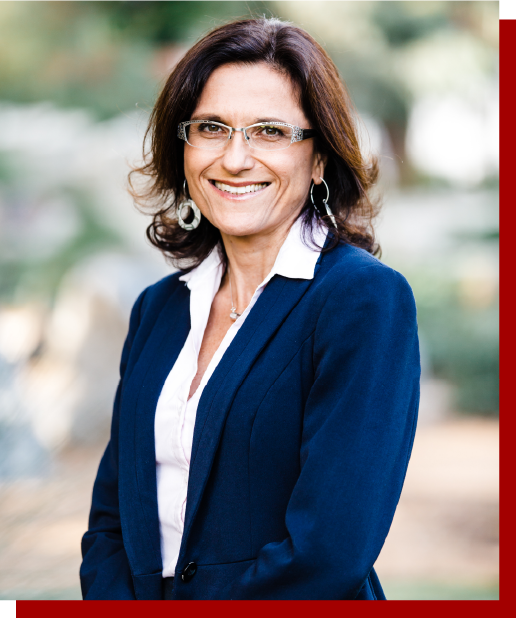What are the degree programs offered by Monash University and what are some of the salient ongoing research projects?
We offer a professionally-accredited undergraduate Bachelor of Engineering (Honours) with ten specialisations in aerospace, chemical, civil, electrical and computer systems, environmental, materials, mechanical, resources, robotics and mechatronics and software engineering. Monash students can also undertake a double degree in another discipline, such as Science or Commerce, to complement their Engineering studies. We also offer a Masters of Advanced Engineering and a Master of Professional Engineering, as well as online programs in Transport and Traffic, Infrastructure Engineering and Management and Bioproduct Manufacturing.
Our active research projects include advancing energy transitions through our Monash Energy Institute, including integrating clean, renewable and distributed energy resources with pilot testing through our existing university grid systems; implantable bionic vision system research; developing membranes with a wide range of separation applications including water purification and tailings reprocessing; robotics, AI and machine learning projects; and water resource and environmental risk management projects using remote sensing technology.
What is the graduation rate of female engineers at Monash University? What are some programs which may increase enrolment of young female leaders in Engineering?
In 2018 and 2019, we graduated approximately 275 women each year in our undergraduate program, which is 30% of our graduating cohort. We aim to achieve a 50:50 gender balance in our enrolments and are pushing hard on achieving that goal.
To increase female participation, we’ve introduced our Monash Engineering Girls (MEG) program to high school students interested in a career in engineering. From year 9 through to year 12, MEG participants attend regular events including engineering design workshops, discovery tours, and lectures and panels run by our academics and student teams.
Our student clubs Female Engineers at Monash and Robogals Monash offer engagement activities and support for young women who are studying, or considering studying engineering. Student club GLEAM also supports queer+ identifying science, technology, engineering and maths students at Monash.
Through the Engineering for Australia Taskforce, we’re working with partners in the university and government sector to raise awareness nationally of the important social and economic value of engineering, and advocate for more visible engineering education in Australian primary and secondary schools.
How would you characterize the current relations between Monash University and the corporate and industry world? What are some of the projects that you are implementing in local companies?
Monash University is located at the centre of the Monash Technology Precinct in Melbourne’s southeast, a technological and industrial cluster contributing over AUD $9 billion to the economy each year, supporting more than 13,000 businesses and employing more than 82,000 people. The CSIRO, the Australian Synchrotron, the Melbourne Centre for Nanofabrication, Monash Health and the forthcoming Victorian Heart Hospital are co-located in the precinct, enabling close collaborations across an integrated research infrastructure network. Engineering research makes a fundamental contribution to the Monash Technology Precinct ecosystem and output, generating impact locally and internationally.
Local exemplars of our industry partnerships include pursuing new hydrogen-energy technology and materials through the Woodside-Monash Energy Transitions Partnership; developing smarter, longer last pavement materials with the Australian Roads Research Board; reducing costly water pipe breakages in partnership with local utility companies; introducing robotics and automation to the agriculture industry through the Monash-Bosch AgTech LaunchPad; and pursuing the integration of renewable energy sources into our existing power grid with the Australian Energy Market Operator (AEMO).
Does Monash University have any international branches?
Monash has a fully-activated teaching and research campus, Monash University Malaysia, located in Kuala Lumpur. We work closely with our colleagues in the Malaysian School of Engineering to develop and deliver joint curriculum and student exchange programs, as well as offer research partnership opportunities.
Through the Monash-Suzhou partnership, Monash operates a joint graduate school and research institute with Southeast University in Suzhou, China. Through this partnership, we offer Masters and PhD programs in Transportation Systems, Civil Engineering and Industrial Chemical Engineering, with Advanced Materials and Manufacturing soon to be introduced. Opportunities for joint research and industry engagement are also available through the Monash-Suzhou partnership.
In India, the IITB-Monash Research Academy PhD program allows Indian students to graduate with a joint PhD degree from both the Indian Institute of Technology Bombay (IITB) and Monash University. In Italy, the Monash Prato Centre provides a European base for education and research collaborations.
Monash has also recently announced the launch of a new Indonesian campus, offering Master and PhD degrees, as well as executive programs and micro-credentials. The first foreign university campus ever established in Indonesia, this new Monash initiative will help strengthen the existing bilateral relationship with our closest international neighbour.
Are there any international partnerships between Monash University and other schools in Europe, Africa, and other regions of the world?
Along with the partnerships already mentioned, Monash University has exchange and study abroad partnerships with over 150 institutions around the world, including a strategic alliance with the University of Warwick, UK.
Monash Engineering has many research, joint PhD and PhD exchange partnerships with institutions in Europe, the USA and Canada; including the University of Bath, University of Bayreuth, University of Warwick, University of California San Diego, Penn State University and the University of British Columbia. We also offer an undergraduate 2+2 program with China’s Central South University and India’s Vellore Institute of Technology.
What are some of the cutting-edge engineering education advancements at Monash University during the last few years under your leadership?
We’ve introduced the Co-operative Education Program into our undergraduate program, which now ensures that our students can benefit from undertaking 3,6 or 12 month paid internships in an industry setting, while also allowing us to actively engage with and respond to current industry needs.
Our student team culture has also expanded significantly and continues to bring exciting opportunities for co-curricular, multi-disciplinary learning. Recent achievements include our Monash Motorsport team ranking #1 and #3 in the world for their combustion and electric vehicles, and Monash Nova Rover finishing in the top 10 of the 2019 University Rover Challenge.

Our new Monash Makerspace, officially opening in 2020, offers dedicated space for Monash students to create and prototype new designs, and conduct student team activities. The Makerspace will also be home to Monash’s entrepreneurship program The Generator, to further foster and support student start-up companies and entrepreneurial activities.
In 2020, we’ve also introduced a new Robotics and Mechatronics undergraduate specialisation, with streams in AI and Automation. In this program, students will apply advanced technical knowledge of robotics engineering via complex and open-ended projects that focus on practical design and build tasks.
Our new Woodside Building for Technology and Design has also recently opened, giving students a ‘living laboratory’ space in which to pursue the design and development of new sustainable energy technology.
Can you share with us some of the approaches that Monash University is implementing in order to sustain growth in its Engineering College and retain a constant growth of its student body in addition to ethnic and gender diversity?
Social justice and inclusion are core Monash goals and values. Our Diversity and Inclusion Framework is a key pillar of our five-year strategic plan that recognises the richness and depth of individual experience and of our University community.
We provide inclusive access across the student life-cycle through scholarships, mentoring, pathways, and career support to encourage participation from prospective and current students and alumni so that social, economic, geographical or cultural barriers are not a disadvantage to accessing a Monash education.
We promote an inclusive workplace culture where diversity is valued and viewed as a key to innovation and excellence. We support staff across the entire employee life-cycle to facilitate their personal and professional development.
In your opinion, what are some significant issues/topics that need to be addressed by the global engineering community and particularly by Engineering Deans, in order to further strengthen inter regional communication and continue to globalize this field of study?
Increased diversity and inclusion in engineering, along with meeting the United Nations Sustainable Development Goals, are the two critical issues we must join forces to address now. As signatories to the Global Engineering Dean’s Council 2019 Sustainability Commitment, or ‘The Santiago Declaration’, we’ve agreed to the guiding principles, and committed ourselves to its further goals. As a faculty, we’ve also released our own Sustainability Statement and Action Plan outlining our actions towards countering climate change and protecting biodiversity.
Continuing to grow our membership to include a large and diverse number of Engineering Deans globally will be important, as well as regularly connecting and collaborating in order to sustain and grow a strong community that can facilitate and provide opportunities for learning and exchange.
What are the main areas of research in Engineering [and Technology] at your institution?
Our research areas are relevant to a wide swath of socio-economic activity, including energy, resources, cities, advanced manufacturing, defence, robotics and AI, water, food and ag-tech, and biomedical technology.

Areas of research strength include: transportation, structural engineering, new construction methods and materials, water resources and water sensitive urban design, remote sensing and earth observation, membrane and separation science, nanomaterials, food science, resources, energy science (including hydrogen, carbon capture, solar, wind and other renewables), communication technologies, sensor technology, robotics, micro-grid, grid optimisation and renewable power integration, biomedical engineering, biomaterials and bioproducts, metallurgical engineering, 3D printing and aerodynamics.
What is the main focus of your research?
My research contributes to the development of knowledge, methods, and algorithms for natural, transparent Human-Robot Interaction that enable humans and robots to interact effectively and cooperatively in unstructured and shared spaces. Motions, gestures, forces, and other cues are effectively used by dyads, as well as larger teams, working together to manage cooperative tasks – particularly in situations where noise, distance, or other barriers preclude verbal communication.
Recent work using augmented reality permits communication and a joint understanding of proposed tasks that are virtually played, reviewed and edited prior to execution. Cues also signal transition-related information essential to collaborative workflow such as: turn-taking/giving, role changes (e.g., leader/follower, instructor/trainee) and state changes (e.g., ready/waiting/busy, unsure/confident). This work facilitates a common understanding of shared task goals leading to increased productivity and safety in collaborative robotics and underpinning the development of intuitive, safety-based control strategies for human-robot interaction.
How has GEDC helped your University achieve the goal of making your institution a more global environment?
Our involvement with GEDC has opened up new opportunities to collaborate, learn and partner across a global network of engineering educators, and to focus and align our efforts with our international colleagues.
What are your top five priorities as a dean and where do you plan to take the Faculty of Engineering five years from now?
As outlined in our strategic plan Engineering Change, our ambition is to be globally renowned for developing creative technical solutions that transform our world and to continuously strive to deliver the best engineering research and education for Australia and the world.
We’ll do so by delivering exceptional student experience; continuously improve on the depth, scope and impact of our research; work widely across disciplines and industries to create the greatest impact for good; and support all of our people to make their own unique, valuable contribution to creating a better, more sustainable world.

